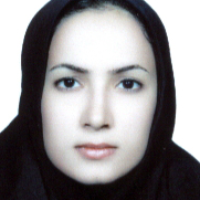A Study on Symbolic Meaning of Poultry Motifs in Sassanid Textiles from the Standpoint of Erwin Panofsky’s Iconology (Case Study: Rooster, Duck and Peacock Motifs)
As the prime exponent of the iconology approach in image analysis, Erwin Panofsky proposes three steps for the approach: the first step, termed “pre-iconographic description,” is to gain an overall understanding of a given artwork; in the second step, namely iconographic analysis, the hidden meaning of that piece is investigated; and finally in the third step, the iconology itself, the researcher tries to explore the intrinsic content by means of iconographic interpretation of a motif. The approach is used in this paper to discuss the poultry motifs found in Sassanid textiles, because on the one hand, bird motifs in this context are a frequent theme which has not been studied from that standpoint, and on the other hand, poultry may seem to have failed to adopt deep, mystical meanings due to their lack of evident mythical qualities. Therefore, this research tries to answer the following: “How are the bird motifs in Sassanid textiles analyzed and interpreted through Erwin Panofsky’s iconology?” The hypothesis is that because these birds lack any unusual, crossover qualities in their appearance, they have come to represent higher notions in line with the glory of the Sassanid Empire. Through a review of existing documents and a study of three handpicked textiles, this analytical, historical research showed that the most frequently used poultry motifs in Sassanid textiles are those of roosters, duck and peacocks. According to the belief system of Sassanid era, these birds, unlike their natural and earthly appearance, are congruent in meaning with promising light, purifying waters, and rebirth, respectively. In discovering and revealing the innate content, this type of poultry is frequently grouped with motifs that indicate “Khvarenah” (Persian: Farrah-e izadi) —divine royal glory and fortune—implicitly and the intrinsic presence of such a symbolic concept amplify their enigma. Circle, halo, water lily, ring, the sun, pearl, and raised ribbon are instances that emphasize the realization of Khvarenah for these birds and as a result the owner of the fabric. Therefore in analytical terms, each bird is associated with a specific conventional notion, namely the harbinger of light, clean waters, and rebirth respectively. In terms of interpretation of symbolic values, one can argue that all three are close in meaning to the Zoroastrian concept of Khvarenah and act as a wish for the persistence and increase of the Khvarenah for those who already have it. In fact, although rooster, duck, and peafowl fauna motifs are defined in the form of natural birds, they are devoid of mythological aspects in appearance and are not able to fly to the celestial world. However, each of them refer to a greater concept and are finally consistent with other cultural motifs with the theme of realization of Khvarenah and related concepts such as good fortune and felicity. Therefore, it could be claimed that the Sassanid artists envisaged the richness of mythological concepts even in imagining material objects in applied arts such as flightless birds drawn on textiles; they also used other ritualistic concepts alongside tangible instances and consciously or unconsciously elucidated symbolic concepts.
- حق عضویت دریافتی صرف حمایت از نشریات عضو و نگهداری، تکمیل و توسعه مگیران میشود.
- پرداخت حق اشتراک و دانلود مقالات اجازه بازنشر آن در سایر رسانههای چاپی و دیجیتال را به کاربر نمیدهد.




